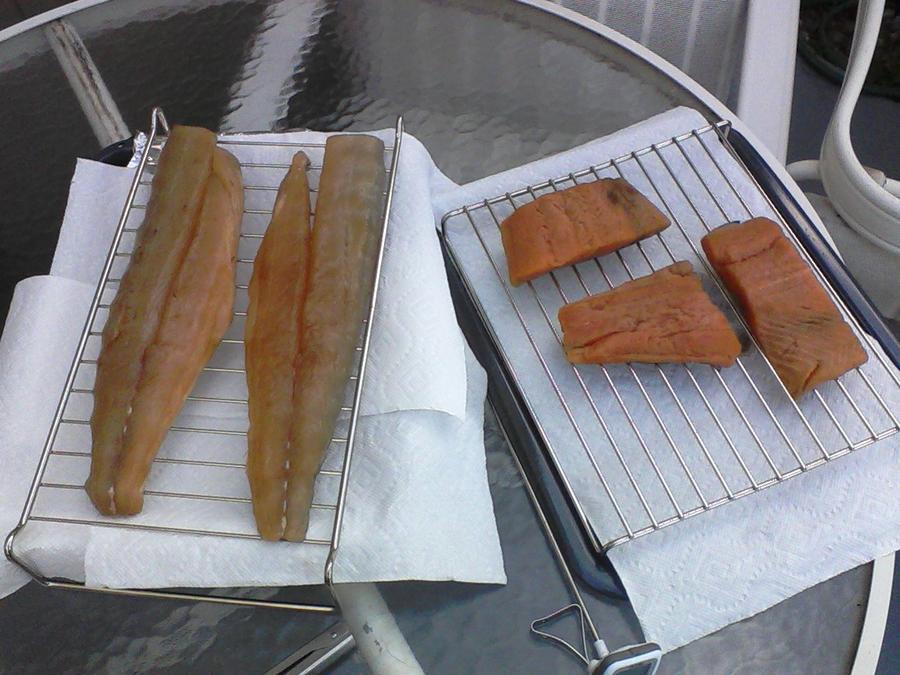- Oct 15, 2014
- 14
- 10
today, i have successfully smoked some salmon and kingfish fillets that were out of this world!!! i did so well, that i had a hard time thinking it was me who smoked it.
the brine was a complete improv, but the ingredients i used are
10 cups water
1/2 cup kosher salt
1 cup brown sugar
2 garlic cloves (minced)
some fresh rosemary
some fresh dill
thyme
paprika
after soaking them for about 12 hours, i had them set to form the pellicle
this is them right before they hit the smoker. (im using a Weber one-touch gold for this smoke)
once the pellicle is formed, prep the smoker for smoking by placing your wood chips on the fire, and wait for it to churn out a nice blue smoke before putting them in.
this is the smoker with the fish already starting the smoking process. the smoke may not be thick, but it was windy for the first half of the day (when this was taken)
after that, just let them smoke at around 190*F for a few hours. and if you go lower than that, its not much of a problem, just extend your smoking time
once they are done, you take them out and enjoy!!
and here is the final product, 2 beautifully smoked kingfish fillets and 3 mediocre salmon fillet pieces. i think that the reason the salmon turned out the way it did was because the pellicle never fully formed.
the brine was a complete improv, but the ingredients i used are
10 cups water
1/2 cup kosher salt
1 cup brown sugar
2 garlic cloves (minced)
some fresh rosemary
some fresh dill
thyme
paprika
after soaking them for about 12 hours, i had them set to form the pellicle
this is them right before they hit the smoker. (im using a Weber one-touch gold for this smoke)
once the pellicle is formed, prep the smoker for smoking by placing your wood chips on the fire, and wait for it to churn out a nice blue smoke before putting them in.
this is the smoker with the fish already starting the smoking process. the smoke may not be thick, but it was windy for the first half of the day (when this was taken)
after that, just let them smoke at around 190*F for a few hours. and if you go lower than that, its not much of a problem, just extend your smoking time
once they are done, you take them out and enjoy!!
and here is the final product, 2 beautifully smoked kingfish fillets and 3 mediocre salmon fillet pieces. i think that the reason the salmon turned out the way it did was because the pellicle never fully formed.







